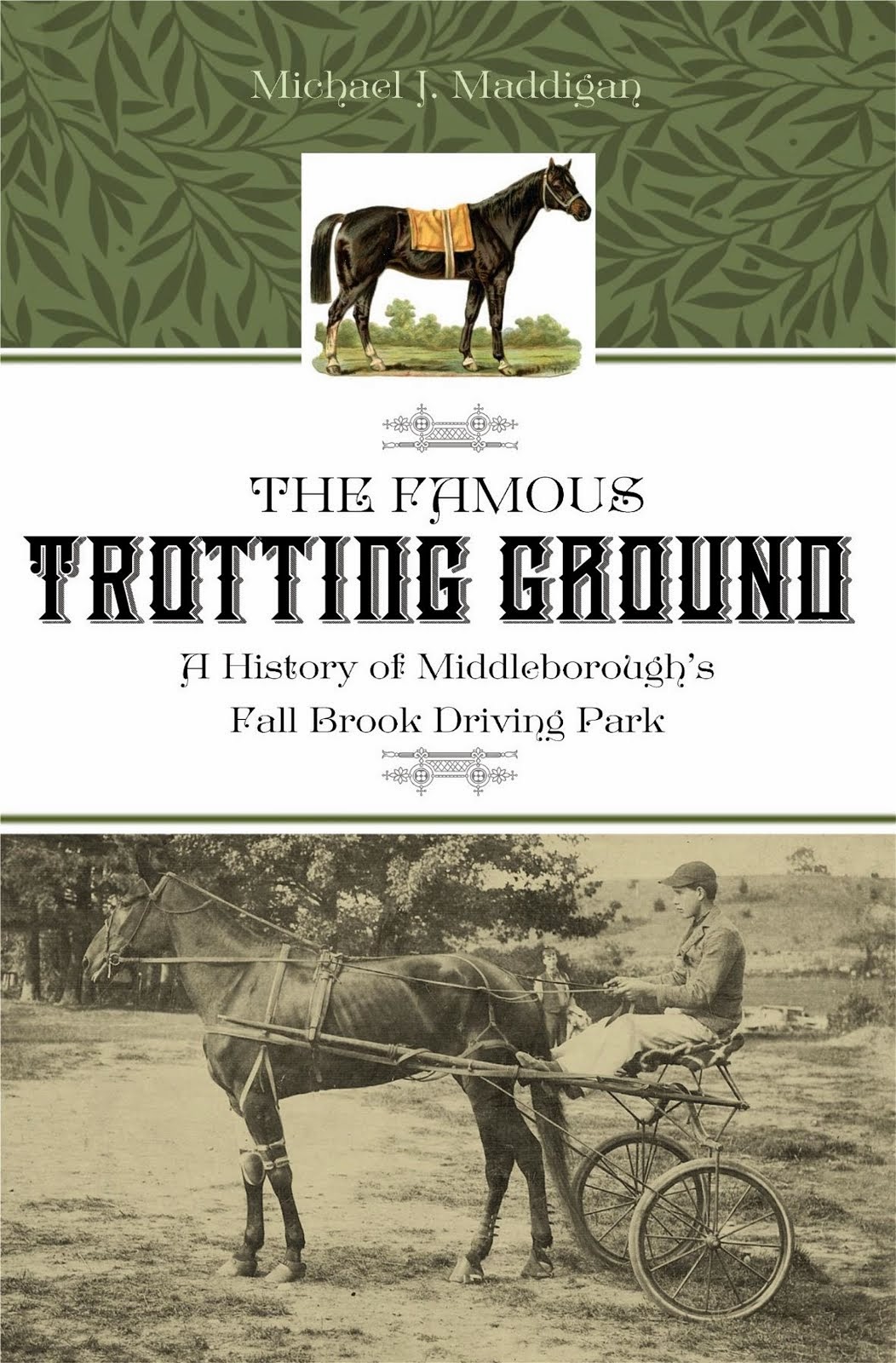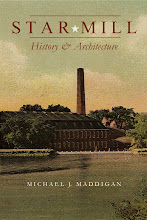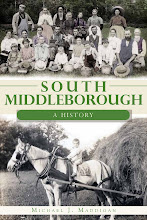 Though Middleborough’s oldest residents might recall the Peirce Block as site of the Middleborough Post Office between 1902 and 1933, the overwhelmingly greater number of memories of the Peirce Block concern one of the block's later tenants - The Great Atlantic & Pacific Tea Company, always known familiarly as the A & P. Few other Middleborough businesses seem to be held in as high a collective esteem or remembered with such warm regard as the Four Corners A & P.
Though Middleborough’s oldest residents might recall the Peirce Block as site of the Middleborough Post Office between 1902 and 1933, the overwhelmingly greater number of memories of the Peirce Block concern one of the block's later tenants - The Great Atlantic & Pacific Tea Company, always known familiarly as the A & P. Few other Middleborough businesses seem to be held in as high a collective esteem or remembered with such warm regard as the Four Corners A & P.Founded in 1859 as a New York-based mail order tea business, the A & P first opened in Middleborough in 1920 in a small ell attached to the Nemasket House hotel on North Main Street. Managed by W. S. Wilder, the store was one of several thousand A & P stores operating nationally.
In late 1920 when Wilder was moved to a new A & P branch on Center Street, he was replaced with William Jacobs in the North Main Street location. The late Lyman Butler fondly recalled one of his earliest jobs as a part-time stock clerk in this first North Main Street A & P under the management of Bill Jacobs, and he described how he was later "eased out" when expanding business warranted a full-time clerk. At the time, the A & P retailed only dry and canned goods and Middleborough customers had to patronize other local markets for perishable items. Despite that fact the A & P store grew rapidly, eventually adding the sale of fresh meat and produce.
In the 1920s, the North Main Street store relocated across the street into the Panesis Block to the store later occupied by Panesis' own market and still later by Cleverly's Market. The A & P paid Panesis $90 a month rent and required Panesis to repaint the store's interior "in accordance with color scheme of Tea Co." with paint provided by the A & P. In 1927, this store began selling fresh food with the addition of a meat market.
Besides the North Main Street location, the A & P also operated a second branch store on Center Street, first in the Atwood Building from about 1920 through 1925 then between 1926 and the early 1930s at Everett Square on the corner of Center and Everett Streets. The Everett Square store was the scene of considerable excitement in 1933 when it was robbed of $396, the robber brandishing a gun and tying up the manager and clerk. The so-called "A & P Bandit" was returned to Middleborough for trial the following year.
 In 1932, the North Main Street store moved to larger quarters in the brick Thatcher Block on the corner of Center Street and Thatcher's Row where the rent in that more visible location was a more substantial $275 a month. Lyman Butler described the Center Street A & P as "without question the most modern in town." In contrast to today when the floor areas of supermarkets measure in thousands of square feet, the Center Street A & P occupied about 2,500 square feet of space (nearly twice that of the North Main Street store), with stock areas located in the basement. At the time of its relocation, the A & P added a large concrete medallion depicting the familiar "A & P" monogram logo to the cornice of the building. This reminder of the store's presence survived until the late 1970s when it toppled to the pavement below.
In 1932, the North Main Street store moved to larger quarters in the brick Thatcher Block on the corner of Center Street and Thatcher's Row where the rent in that more visible location was a more substantial $275 a month. Lyman Butler described the Center Street A & P as "without question the most modern in town." In contrast to today when the floor areas of supermarkets measure in thousands of square feet, the Center Street A & P occupied about 2,500 square feet of space (nearly twice that of the North Main Street store), with stock areas located in the basement. At the time of its relocation, the A & P added a large concrete medallion depicting the familiar "A & P" monogram logo to the cornice of the building. This reminder of the store's presence survived until the late 1970s when it toppled to the pavement below.The A & P remained in the Thatcher Block for only a short period of time. As the Post Office had vacated the bottom floor of the Peirce Block at the Four Corners a number of years earlier, the A & P was able to rent that space from the Peirce Trustees, and Middleborough’s A & Ps were consolidated there in 1938. For years following the A & P's removal to the Peirce Block, its advertisements emphasized its location as being that of the "Old Post Office," indicating how closely identified the Post Office and Peirce Block were in the public's mind at that time. Ironically, the A & P would later, itself, become so closely identified with the Peirce Block that it would supplant any former associations between the building and its former tenants - even the Post Office whose long term presence in the building has since been somewhat forgotten.
 The A & P’s advertising at the time proclaimed the new Peirce Block store which opened for business on March 25, 1938, as the “newest … most modern self-service food store!" Clearly the typesetter exhausted his supply of exclamation points when setting the following piece of enthusiastic copy about Middleborough's latest A & P: "A new type of food store – stripped of frills – stripped for action to give you bigger and better savings. Over a thousand ways to save this modern way – not just a few tempting special[s] – but sensational low Self-Service prices for everyday of the week on every single item. It’s fun, too. No necessary waiting – serve yourself and save! Compare prices – compare quality. You’ll be amazed! Get the Self-Service habit and save! More clerks employed than ever before to make your shopping easier!”
The A & P’s advertising at the time proclaimed the new Peirce Block store which opened for business on March 25, 1938, as the “newest … most modern self-service food store!" Clearly the typesetter exhausted his supply of exclamation points when setting the following piece of enthusiastic copy about Middleborough's latest A & P: "A new type of food store – stripped of frills – stripped for action to give you bigger and better savings. Over a thousand ways to save this modern way – not just a few tempting special[s] – but sensational low Self-Service prices for everyday of the week on every single item. It’s fun, too. No necessary waiting – serve yourself and save! Compare prices – compare quality. You’ll be amazed! Get the Self-Service habit and save! More clerks employed than ever before to make your shopping easier!”Like Lyman Butler, Clint Clark also wrote warmly of his reminiscences of the A & P, remembering it for its role in introducing self-service shopping locally.
"I don't think the A & P at the Four Corners ever operated as what we called a 'straight' grocery store, clerks waiting on customers, that is. As I recall, it was set up for self-service when it opened. In theory, self-service would make it possible to reduce food prices, as it eliminated maintaining a staff of clerks to wait on customers. On the other hand, self- service required staffing checkouts, and help to keep the shelves stocked and goods priced - plus numerous other chores." Not only were the self-service concept and savings popular with Middleborough shoppers, but brands such as Eight O'Clock and Red Circle coffee, Jane Parker and Ann Page products found a following as well.
At the time the A & P moved into the Peirce Block, it was managed by Elmer "Tubby" Dewhurst, with Andy Pike managing the meat department. Later, James Mooney was named manager of the store.
When the A & P made its move to the Peirce Block over sixty years ago, the grocery trade was far more competitive than today. At the time, Stop & Shop operated a store a short distance away along Center Street while the main A & P rival in Middleborough - the First National - conducted business in the brick block which later was the last home of the Boston Store. Additionally, there were the numerous local stores, including the Homestead grocery, which competed for Middleborough shoppers.
Despite this competitive environment (or, perhaps, because of it), the A & P flourished in the Peirce Block, remaining there until larger quarters were required in 1961, at which time it relocated Everett Square. During its roughly quarter century of Peirce Block tenancy, the A & P attracted thousands of shoppers and, in the process, created what seem to be thousands of affectionate memories. Mention the Peirce Block to any Middleborough resident of the right age and, undoubtedly, they'll share one of these memories with you.
(Of course, still younger readers will recall the A & P from the days following 1961 when it relocated at Everett Square in the building now occupied by the Rockland Trust Company. It remained there until it closed in 1977).
Illustrations:
A & P Logo
The distinctive A & P logo helped brand the store and promote the company as one of the most reliable and recognizable in the country.
Former A & P, Center Street and Thatcher's Row, Middleborough, MA, photograph by Clint Clark, 1975
The A & P occupied a store in the remodelled Thatcher Block on Center Street between 1932 and 1938 before relocating to the Peirce Block and, later, Everett Square. Ironically, the A & P logo which the company erected along the roofline of the Thatcher Block and which is clearly visible in this photograph remained long after the store had relocated elsewhere. It eventually toppled to the pavement.
A & P Advertisement, Saturday Evening Post, c. 1930
The A & P was noted not only for the prices it offered, but for its high quality and frequent advertising as well. This example which depicts an A & P store similar to the one which operated in the Thatcher Block touted the quality and savings offered by the store, as well as its exceptional staff: "And the personnel ... they're out of the ordinary, too! Alert, intelligent and courteous sales people lending every effort to make you feel at home. A cheery 'good morning' when you come and a friendly 'thank you' when you leave. Your visit has been all too short, you say, as you go home, supremely confident you have purchased the utmost in quality and at a substantial saving."
Sources:
This post originally appeared in "Recollecting Nemasket" in the Middleboro Gazette.
For more about the history of the A & P, visit the A & P website or read:
Avis H. Anderson, Images of America: A & P - The Story of the Great Atlantic & Pacific Tea Company (Charleston, SC: Arcadia Publishing, 2002).
William I. Walsh, The Rise and Decline of the Great Atlantic & Pacific Tea Company (L. Stuart, 1986).













 One of the most prolific advertisers in Victorian Middleborough was Brett's Clothing Store. Operated on Center Street by George L. Brett, the store was a purveyor of men's and boys clothing and furnishings. Additionally, a steam laundry was operated by the firm for the convenience of customers. Throughout the early 1880s, Brett's issued numerous trade or advertising cards both to solicit business and to attract repeat customers, many of whom collected the colorful lithographic cards and pasted them into albums. Brett's was shortly succeeded as a dealer in men's apparel by Sparrow Brothers and the Middleborough Clothing Company, but neither left behind such a colorful legacy as did Brett's.
One of the most prolific advertisers in Victorian Middleborough was Brett's Clothing Store. Operated on Center Street by George L. Brett, the store was a purveyor of men's and boys clothing and furnishings. Additionally, a steam laundry was operated by the firm for the convenience of customers. Throughout the early 1880s, Brett's issued numerous trade or advertising cards both to solicit business and to attract repeat customers, many of whom collected the colorful lithographic cards and pasted them into albums. Brett's was shortly succeeded as a dealer in men's apparel by Sparrow Brothers and the Middleborough Clothing Company, but neither left behind such a colorful legacy as did Brett's.



 Prior to the propagation of cranberries, one of Middleborough’s principal fruit crops had been the wild huckleberry. While huckleberries may never have proved a crop of enormous commercial value for Middleborough, their role in the social history of the community is, nonetheless, noteworthy, and recorded references to huckleberrying are frequent in the period preceding the First World War.
Prior to the propagation of cranberries, one of Middleborough’s principal fruit crops had been the wild huckleberry. While huckleberries may never have proved a crop of enormous commercial value for Middleborough, their role in the social history of the community is, nonetheless, noteworthy, and recorded references to huckleberrying are frequent in the period preceding the First World War.
























+of+Smoky+Mountains+018.jpg)